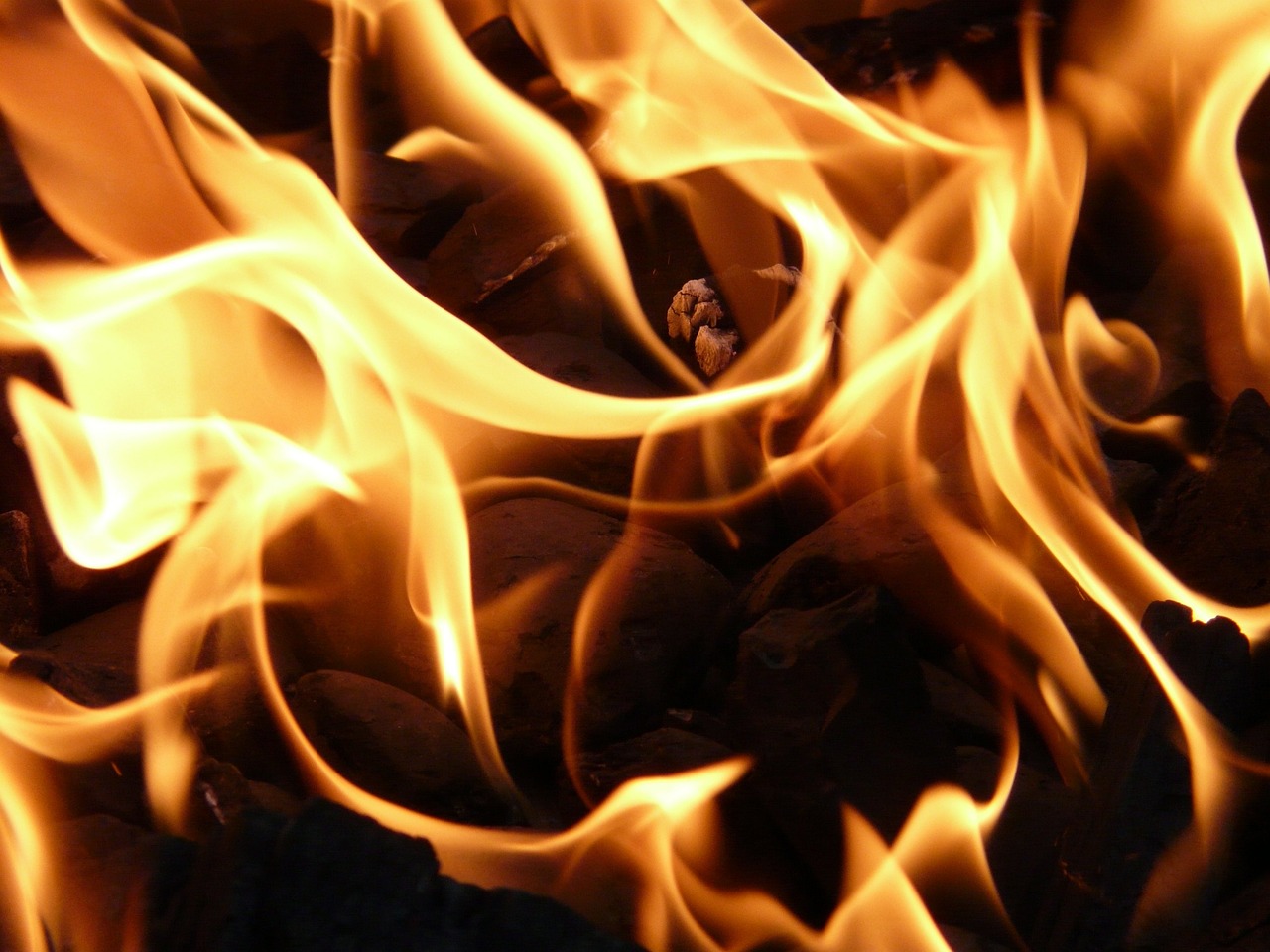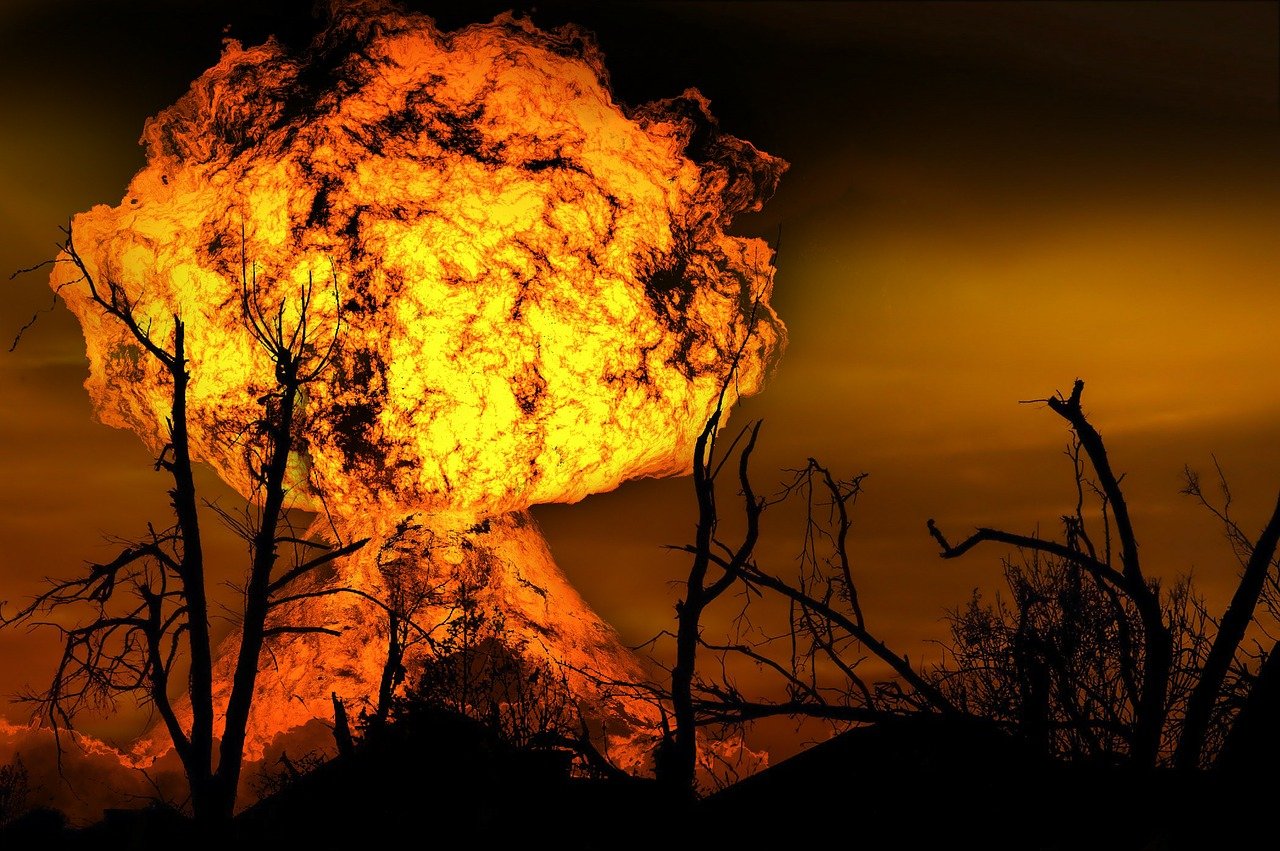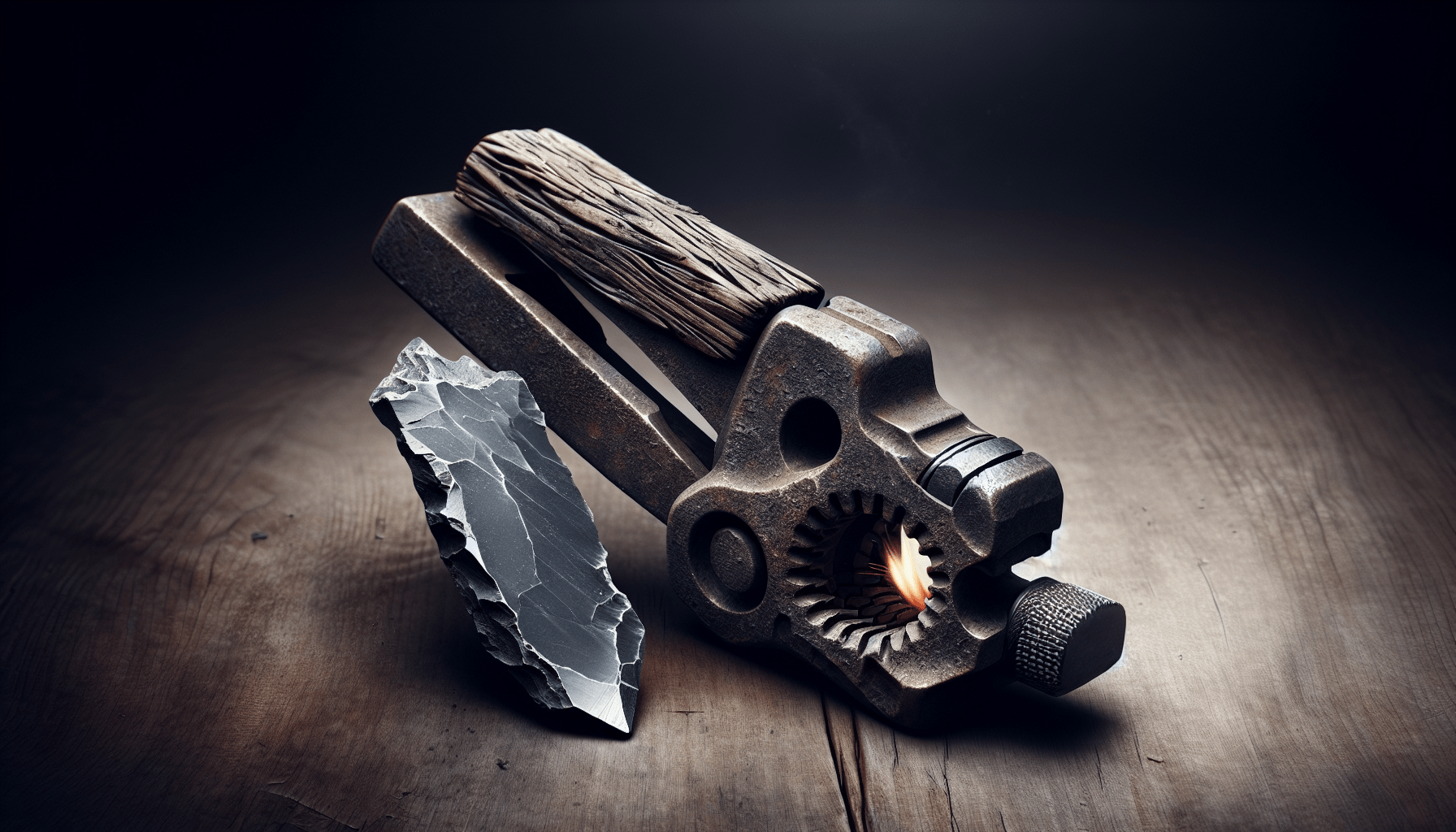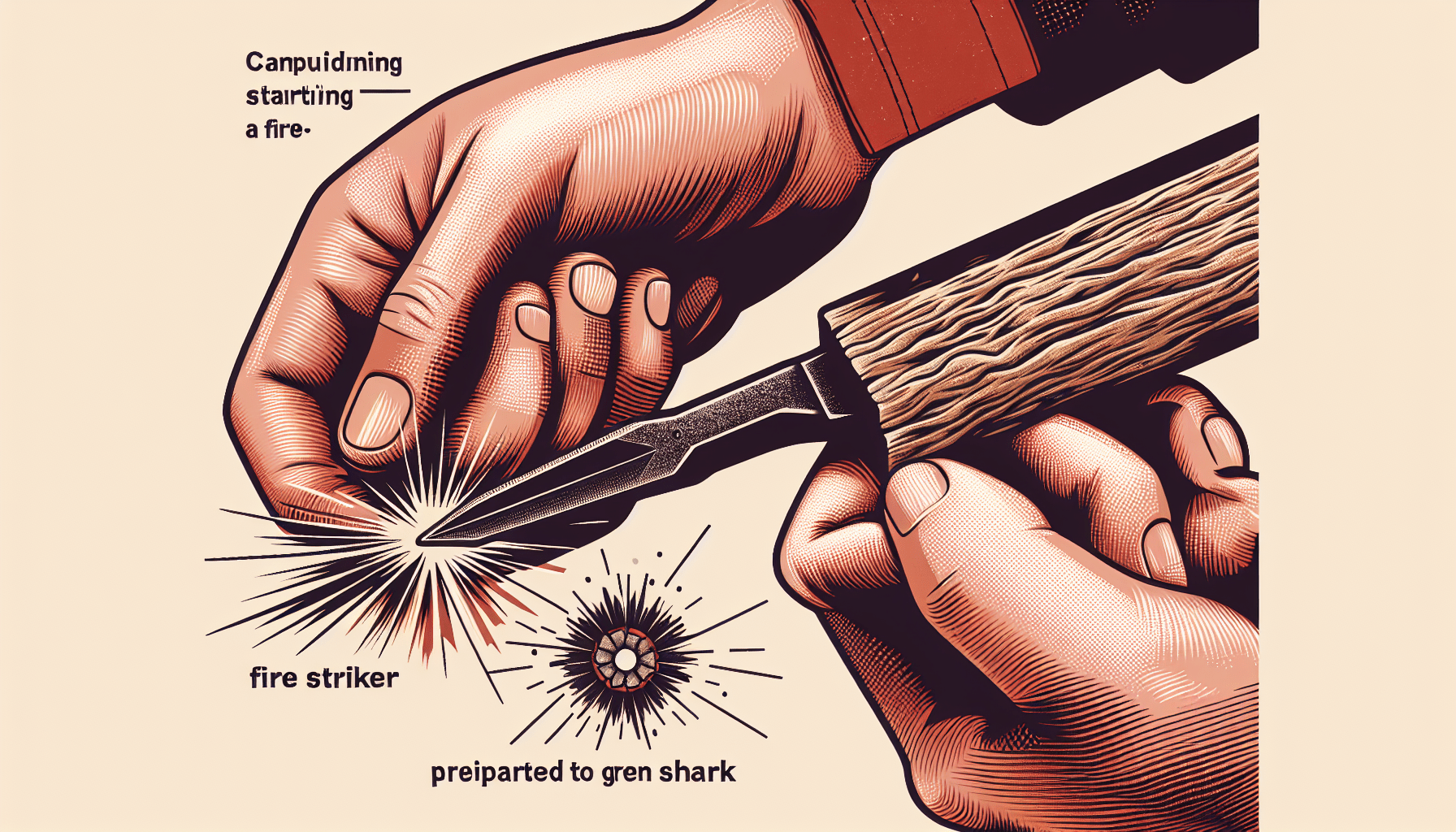In the vast world of outdoor activities, knowing how to start a fire is not only essential, but it can also be an exciting skill to master. Whether you are camping, hiking, or simply enjoying a cozy backyard bonfire, having a reliable and efficient fire starting method is key. From the traditional art of rubbing sticks together to the modern convenience of a butane lighter, this article explores the most popular fire starting methods that have stood the test of time. So grab your marshmallows and get ready to learn about the fascinating ways to ignite a fire in the great outdoors.

Matches
Regular matches
Regular matches are a common and reliable fire-starting method that can be found in almost any household. They consist of a wooden stick with a small amount of ignitable material at the tip, usually sulfur or phosphorus. To use regular matches, simply strike the tip of the match against a rough surface, such as the striking pad on the matchbox or a rough stone, to create a spark and ignite the match. Regular matches are lightweight, inexpensive, and easy to use, making them a popular choice for campers, hikers, and outdoor enthusiasts.
Waterproof matches
If you are planning to venture into wet or damp conditions, waterproof matches are an excellent choice. These matches are specially designed to withstand moisture and can still be ignited even after being completely submerged in water. Waterproof matches typically have an extra waterproof coating on the matchstick, as well as a waterproof container for storage. To use waterproof matches, simply follow the same process as regular matches, striking them against the designated striking surface. These matches are a great addition to any emergency kit or survival gear.
Stormproof matches
For those facing extreme weather conditions, such as strong winds or heavy rain, stormproof matches are the ultimate solution. As the name suggests, these matches are designed to remain lit even in the harshest of conditions. Stormproof matches are usually longer, with a longer burn time, and they are also wind-resistant. They are often sold in waterproof containers to provide additional protection against moisture. Stormproof matches are an essential tool for individuals who frequently encounter challenging weather conditions during their outdoor adventures.
Lighter
Standard butane lighter
The standard butane lighter is a reliable and convenient option for fire starting. These lighters utilize butane gas as a fuel source, which is easily ignited by a spark produced by striking the flint wheel. To use a butane lighter, simply ignite the flame by pressing down on the ignition button or sliding the safety lever, depending on the model. Butane lighters are compact, portable, and easy to use, making them a popular choice for everyday use and outdoor activities.
Windproof lighter
When faced with windy conditions, a windproof lighter is invaluable. Windproof lighters employ advanced technology to produce a powerful flame that can withstand even the strongest gusts of wind. These lighters usually feature a flame that is shielded from the wind, preventing it from being extinguished. Some windproof lighters also include additional features such as a lock to maintain a constant flame or a built-in compass for added functionality. Whether you’re camping in the mountains or sailing on a windy day, a windproof lighter is an essential tool to have in your arsenal.
Electric arc lighter
For those looking for a flameless option, an electric arc lighter is a fantastic alternative. Instead of using a traditional flame, these lighters generate an electric arc between two electrodes, producing a high-intensity heat source to ignite materials. Electric arc lighters are rechargeable and are often USB-powered, eliminating the need for refills or lighter fluid. They are also windproof and can be used in any weather conditions. Electric arc lighters offer a modern and eco-friendly fire-starting option for those looking to minimize their environmental impact.

Firesteel
Traditional firesteel
The traditional firesteel, also known as a flint and steel, has been used for centuries as a reliable fire-starting method. A firesteel typically consists of a piece of high-carbon steel, known as the striker, and a ferrocerium rod. To generate sparks, the striker is firmly scraped against the rod, creating friction and sparks that can be directed onto a tinder bundle. Traditional firesteels require proper technique and practice to master, but once mastered, they offer a dependable and durable fire-starting solution that can withstand various weather conditions.
Ferrocerium rod
A ferrocerium rod, often referred to as a ferro rod or firesteel rod, is a modern advancement in fire-starting technology. It is made from a combination of metallic elements, including iron, cerium, and magnesium. When the rod is struck with a sharp edge, such as a knife or rock, it produces a large number of hot sparks that can easily ignite a tinder bundle. Ferrocerium rods are lightweight, compact, and easy to use, making them a popular choice among outdoor enthusiasts and survivalists.
Magnesium firestarter
Magnesium firestarters are a versatile fire-starting tool that combines the properties of both firesteel and magnesium. These devices usually consist of a flint or ferrocerium rod with a small block of magnesium attached. By scraping the striker against the rod, sparks are generated and directed onto the magnesium, which can be shaved into a pile of shavings beforehand. Once ignited, the magnesium shavings burn at an extremely high temperature, making them ideal for starting fires even in wet or challenging conditions. Magnesium firestarters are compact and lightweight, making them a valuable addition to any survival kit or outdoor gear.
Fire plow
Preparing the fire plow
To use the fire plow method, you must first prepare the fire plow itself. Find a dry, flat piece of wood, preferably hardwood, and carve a groove or trench into it, about a foot long. This groove will act as a guide for the friction process. Next, find a stick or piece of wood that will serve as the plow. Carve one end of the plow to a pointed tip to create maximum friction when rubbed against the groove. Ensure that the plow is approximately one to two inches thick for better control during the fire-starting process.
Technique for using a fire plow
Using the fire plow requires a consistent and repetitive motion to generate enough friction to create an ember. Place one end of the plow’s pointed tip into the groove, applying downward pressure and holding it securely in place. With your dominant hand, rapidly rub the plow back and forth, applying strong and consistent pressure. The friction between the plow and the groove will generate heat, causing wood particles to char and create an ember. Once the ember has formed, transfer it carefully to a tinder bundle, gently blowing on it to nurture it into a flame. Practice and perseverance are key when using the fire plow method, as it requires well-developed skills to successfully start a fire.

Flint and steel
Selecting the right materials
When using the flint and steel method, it is crucial to choose the right materials. Look for a piece of flint or chert, which are hard rocks that can produce sparks when struck properly. The other essential component is steel, which can be in the form of a high-carbon steel striker, like a knife, or a purpose-built striker. The steel should be strong and sharp to create sufficient sparks when struck against the flint. Additionally, it is helpful to have a tinder bundle prepared beforehand to catch the sparks and facilitate fire ignition.
Striking the flint and steel
To produce sparks using flint and steel, firmly hold the flint in one hand and the steel in the other. Position the steel at an angle of around 30 to 45 degrees to the flint and strike forcefully. The goal is to strike the flint with enough pressure to cause small fragments to shear off, creating sparks that fly into the air. Aim the sparks directly onto the prepared tinder bundle, using the bundle’s dry and flammable materials to catch and nurture the sparks into a flame. With practice and proper technique, flint and steel can be a reliable fire-starting method that connects us to ancient fire-making traditions.
Tinder bundle preparation
A well-prepared tinder bundle is essential for catching and nurturing the sparks produced by flint and steel. Gather a variety of dry, fibrous materials, such as fine twigs, dry grass, dried leaves, or strips of bark. Take care to gather materials that are highly flammable and can catch fire easily. Next, loosely bundle the materials together, creating a nest-like structure that allows air to flow through. Ensure that the tinder bundle is easily accessible and positioned near the striking action, ready to receive the sparks. A properly prepared tinder bundle significantly increases the chances of successfully starting a fire with flint and steel.
Bow drill
Building the bow drill set
The bow drill method utilizes a combination of mechanical friction and downward pressure to create a coal that can be blown into a flame. To build a bow drill set, you will need a few essential components: a fireboard, a spindle, a bow, and a bearing block. The fireboard is a flat piece of dry wood that will serve as the base. Carve a small notch near the edge of the fireboard. The spindle is a cylindrical piece of wood that fits into the bow. It should be carved to a pointed tip at one end which will create friction against the fireboard. The bow is a flexible piece of wood with a cord or rope attached at both ends. The bearing block is a flat piece of wood that will be placed on top of the spindle to provide downward pressure.
Using the bow drill
Using the bow drill requires a steady motion and precise technique to generate enough friction and heat. Place the spindle vertically on the fireboard, using the notch as a guide. Hold the bow in one hand, placing one end of the spindle into the bowstring and securing it with a firm grip. With your other hand, apply downward pressure using the bearing block on top of the spindle. Begin moving the bow back and forth in a sawing motion, applying consistent and even pressure. The friction created between the spindle and the fireboard will cause heat to build up, eventually creating a coal in the notch. Once the coal has formed, transfer it carefully to a tinder bundle and blow gently to nurture it into a flame. The bow drill method requires practice, perseverance, and proper technique but can be a rewarding and highly effective way to start a fire in the wilderness.

Fire piston
How a fire piston works
A fire piston utilizes the principle of compressing air rapidly to generate enough heat to ignite tinder. It consists of a cylindrical tube with an airtight piston inside. When the piston is forcefully and rapidly pushed down, the air inside the tube becomes highly compressed, creating an increase in temperature. As the piston is quickly retracted, the sudden drop in pressure causes the air to cool rapidly, which results in a hot ember being created. This ember can then be transferred to a tinder bundle and blown into a flame.
Using a fire piston
Using a fire piston requires precise and rapid movements to generate enough heat for ember formation. First, insert a small piece of tinder, such as char cloth or jute twine, into the end of the fire piston that connects to the airtight chamber. Next, firmly push the piston into the cylinder in one swift motion. The rapid compression of air inside the chamber will create heat, causing the tinder to ignite. Retract the piston quickly, exposing the hot ember, and transfer it carefully to a tinder bundle. Gently blow on the ember to nurture it into a flame. The fire piston method offers a unique and efficient way to start a fire, especially in situations where other fire-starting methods may be difficult or impossible.
Magnifying lens
Finding the right lens
To start a fire using a magnifying lens, you will need to find the right lens with the correct focal length. Look for lenses that are made of high-quality glass and have a spherical shape. The lens should be free from scratches or imperfections that could distort the focus. Additionally, the lens should have a focal length of at least a few inches, ensuring that it can concentrate sunlight into a small enough point to generate sufficient heat to ignite tinder. Experiment with different lenses and distances to find the optimal combination for fire starting.
Focusing the sunlight
Once you have found the right lens, the next step is to focus the sunlight onto a specific point. Hold the lens at a distance from the tinder bundle, adjusting the angle and distance until the focused spot of light is as small and concentrated as possible. By finding the right focal point and aligning the lens with the sun’s position, you can maximize the amount of sunlight entering the lens and increase the chances of ignition.
Igniting the tinder
With the sunlight focused to a small point, carefully position the focused beam of light onto the prepared tinder bundle. Hold the lens steady and allow the concentrated sunlight to heat up the tinder. Depending on the materials used and the intensity of the sunlight, it may take a few seconds to a few minutes for the tinder to smolder and ignite. Once the tinder starts smoking and igniting, gently blow on it to nurture it into a flame. The magnifying lens method is not only effective but also provides a unique and fascinating way to start a fire using the power of the sun.

Chemical reactions
Potassium permanganate and glycerin
A chemical reaction between potassium permanganate and glycerin can create a pyrotechnic flame that can be used to start a fire. Mix a small amount of potassium permanganate, a purple crystal-like substance, with an equal amount of glycerin, a clear, viscous liquid. Once combined, the reaction between the two compounds will rapidly generate heat and a bright purple flame. Place a small amount of glycerin and potassium permanganate mixture onto a non-flammable surface, ignite it with a spark from a lighter or flint and steel, and use the resulting flame to ignite your tinder bundle.
Potassium permanganate and antifreeze
Another chemical reaction that can be used for fire starting involves potassium permanganate and antifreeze. Mix a small amount of powdered potassium permanganate with an equal amount of antifreeze, which typically contains methanol. The mixture will produce a chemical reaction that generates heat and a bright, orange flame. Similar to the previous method, place a small amount of the potassium permanganate and antifreeze mixture onto a non-flammable surface, ignite it with a spark, and transfer the resulting flame to your tinder bundle.
Sulfuric acid and sugar
A combination of sulfuric acid and sugar can also create a chemical reaction that produces heat and a flame suitable for fire starting. Mix equal parts of powdered sugar and concentrated sulfuric acid, preferably in a well-ventilated area and while wearing protective gloves and eyewear. The reaction between the two chemicals will release heat and gases that ignite, producing a small, intense flame. Carefully pour a small amount of the sugar and sulfuric acid mixture onto a non-flammable surface, ignite it with a spark, and use the resulting flame to ignite your tinder bundle.
Battery and steel wool
Creating a circuit with a battery
Using a battery and steel wool is a straightforward method for igniting a fire. Begin by obtaining a 9-volt battery and a piece of fine-grade steel wool. Hold one terminal of the battery against the steel wool and touch the other terminal to the wool. The steel wool will instantly heat up and start glowing orange, producing sparks. Ensure that the sparks fall onto a prepared tinder bundle, igniting it and allowing you to nurture the flame.
Igniting the steel wool
With the steel wool glowing and producing sparks, carefully direct the sparks onto a tinder bundle. The steel wool should be held above the tinder bundle, allowing the sparks to fall onto the dry and flammable materials. Once the sparks catch on the tinder, gently blow on it to encourage the flame to grow. The combination of a battery and steel wool is a simple yet effective method for quickly starting a fire and can be particularly useful in emergency situations.
In conclusion, there are numerous fire-starting methods available, each with its own advantages and considerations. Whether you prefer the simplicity of matches, the durability of firesteel, the traditional feel of flint and steel, or the ingenuity of chemical reactions and unconventional methods, there is a fire-starting technique suited to your needs. It is essential to practice and become skilled in multiple methods, as relying on a single method may prove challenging or impossible in certain situations. By understanding and mastering these popular fire-starting methods, you will gain confidence and preparedness for any outdoor adventure or survival scenario. Remember to always exercise caution and follow safety guidelines when using fire-starting tools, and enjoy the warmth and comfort that fire can provide in the great outdoors.
